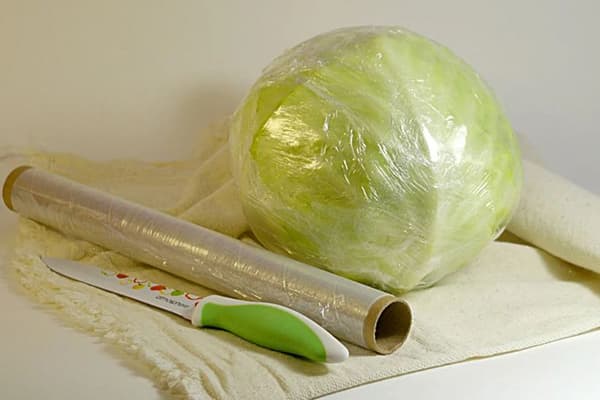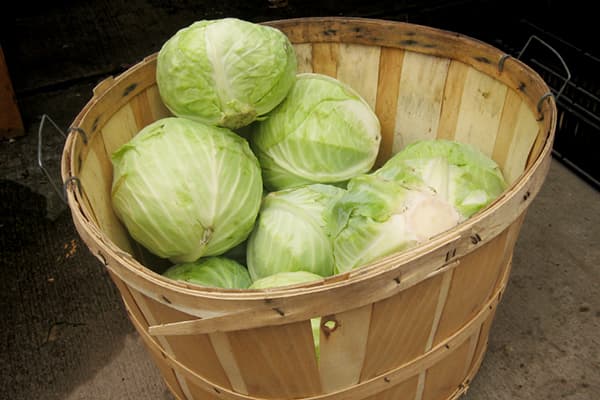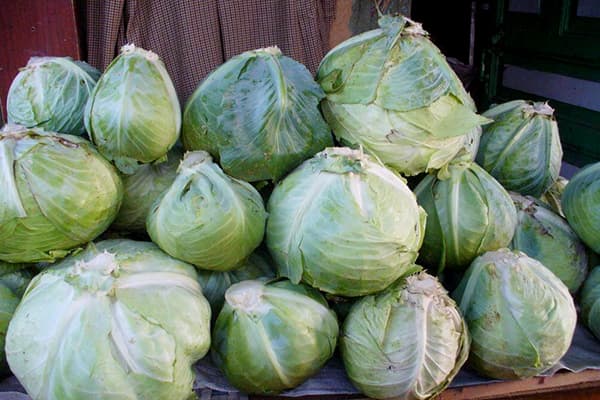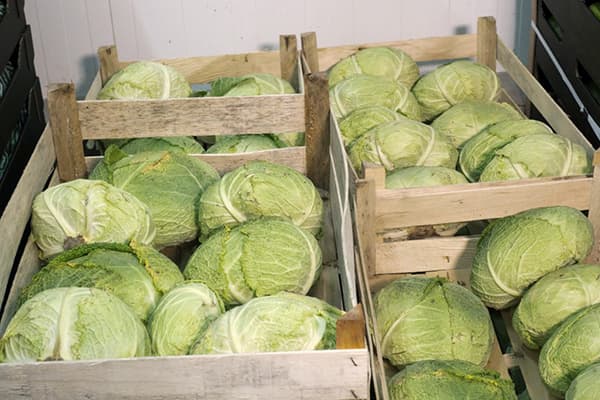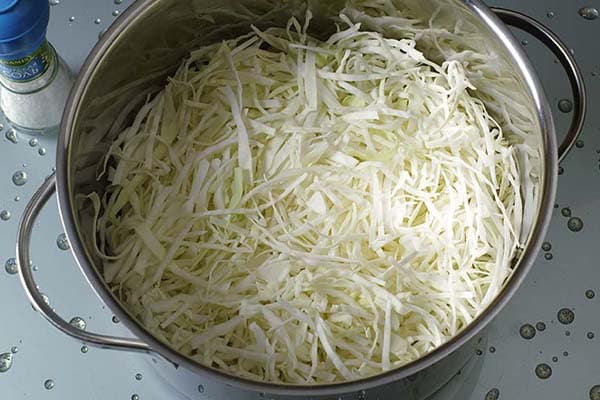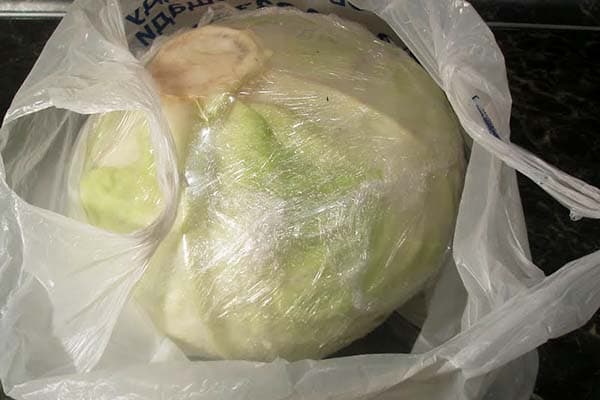6 ways to preserve fresh cabbage for the winter
Content:
You can store cabbage until spring in different ways: place it in boxes or on racks, cover it with sand, or hang it. In most cases, the role of storage is played by a basement or cellar. But even in the apartment you can prepare a place to place the harvest. The main thing is to create optimal conditions under which the heads of cabbage will not spoil.
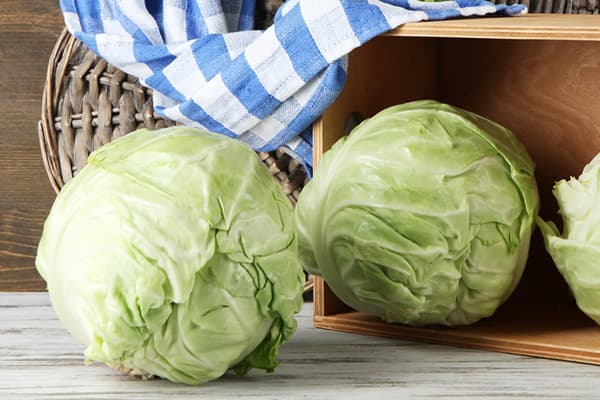
Storage conditions
How to properly store cabbage is described in detail in the document GOST 28373-94. If all points are followed, it will last from 4 to 7 months, that is, until spring.
- Preparation. You can store whole cabbage with roots or with a trimmed stalk and 2-3 covering leaves. Cutting off the root and covering leaves saves space. Vegetables are harvested in dry weather when fully ripe. Only dense forks that are not cracked, not rotting, or affected by pests and diseases are selected for storage. The crop is then dried.
- Temperature. Should not go beyond -1 to +2 °C.
- Humidity. Optimal level – 90–95%
- Ventilation. Cabbage needs it. Firstly, without air circulation in a humid environment, fungus (mold) actively develops. Secondly, when stored indoors, carbon dioxide accumulates, which harms the prepared vegetables.For air circulation, the heads of cabbage are placed individually or in a loose pile with the cuts facing up.
- Light should not shine on vegetables. With excess light, germination is activated.
Only late varieties of cabbage are suitable for long-term storage.
How to store cabbage at home?
To preserve the harvest until spring, it is necessary to create optimal conditions for storing cabbage. For better preservation at home, they also use various tricks:
- Cling film. Wrapping cabbage in film can extend its shelf life by 15–20%. The heads are allowed to dry, then cling film is tightly wrapped around each head in 3 layers. For convenience, it is better to use a roll 35–45 cm wide.
- Feed chalk. They rub cabbage with it to absorb excess moisture. If the head of cabbage “sweats” due to temperature changes, the chalk will absorb water and prevent the crop from rotting.
- Pyramid of vegetables. To improve ventilation and reduce the risk of damage, the forks are staggered in the form of a pyramid.
- Hanging storage method. Used if the forks were collected from the roots. Cabbage suspended from the ceiling is well ventilated and does not spoil for a long time. A rope is tied around the root and the end is secured to a nail. It is important that the vegetables do not touch each other.
- Storage in sand. This method is characterized by minimal crop losses. Its essence is to leave a stalk 8 cm long and, as it were, plant the cabbage in the sand, and then sprinkle it on top.
- Paper. To increase shelf life, vegetables are also wrapped in paper (parchment or office white). It protects them from freezing and absorbs excess moisture.
If the cabbage begins to spoil, you can ferment it. In a cool place in a barrel it will easily stand for 8 months.To do this, the surviving cabbage leaves need to be chopped, mixed with carrots, added salt (150 g per 3 kg) and kneaded. Then the sauerkraut should ferment in a warm place under pressure for 7-14 days. After this, it can be eaten or stored in the cellar.
Storage spaces
It is preferable to store vegetables in the basement or cellar in winter. Semi-underground rooms have optimal humidity and temperature. Plus, they can hold a lot of vegetables.
If you don't have your own basement, there aren't many options left. In the apartment, cabbage is stored on the balcony or in the pantry.
In the cellar
Here you can store cabbage in all available ways: on a rope, in the sand, in a pyramid, wrapped in film or paper. But most often it is placed in boxes with holes. The only negative is that the heads of cabbage in the box are in contact with each other, and if one goes bad, the others will begin to rot. It is better to build racks in the cellar on which each vegetable will lie separately.
Cabbage should not be stored together with vegetables and fruits that emit ethylene. If possible, provide a separate area for cabbage supplies.
On the balcony
Vegetables can only be stored on a glassed and insulated balcony. Otherwise, in winter they will freeze and spoil. For balcony storage, it is recommended to wrap cabbage in paper. Then it is laid out in boxes or on shelves. The average shelf life is 4 months.
In the pantry
You can store cabbage in the pantry, provided that it is unheated. The crop is placed in the coolest corner. It is worth wrapping the heads of cabbage in several layers of cling film. This will help maintain moisture inside the cabbage. It will remain fresh and juicy for 2-3 months.
In a refrigerator
Home refrigerators are not used for long-term storage of cabbage. They have too little space and lack ventilation. If the head is fresh and wrapped in film, it will last in the refrigerator for 10–20 days, but without film its shelf life is limited to 2–3 days. However, cabbage can be frozen.
- Belokachannaya When frozen, it loses its appearance and stops crunching, but retains its full benefits. It is chopped and then packaged in portions in bags. The preparations are used for preparing dishes: borscht, stew and others.
- Colored When frozen, cabbage remains just as aromatic, tasty and healthy. To prevent it from darkening, before cooling it is disassembled into inflorescences and placed in boiling water for 3 minutes.
The shelf life of frozen cabbage is 9 months.
Which cabbage stores best?
The keeping quality of vegetables directly depends on the variety. Only late-ripening cabbage is suitable for long-term storage.
- Varieties with a shelf life of up to 7 months: Belosnezhka, Zimovka, Kharkovskaya Zimnyaya, Dashkovskaya, Turkis.
- With a shelf life of up to 6 months: Podarok, Amager, Gako, Dauerweiss.
- With a shelf life of up to 4 months: Nadezhda, Belorusskaya, Zimnyaya Gribovskaya, Stone head.
Storing different types of cabbage
White and red cabbage are most often stored for long-term storage. They are less whimsical compared to other species.
- Colored is stored in boxes under polyethylene for about 2 weeks. So that it lasts in the winter, it is grown in the cellar.
- Beijing quickly withers, so it is stored in the basement in cling film. In this form it can lie for up to 3 months.
- Kohlrabi retains freshness best at 0°C and 90% humidity. It is placed in the cellar in wooden boxes and sprinkled with wet sand.The maximum shelf life of kohlrabi is 4–5 months.
Preserving cabbage until spring is not an easy task. It contains a lot of moisture and therefore deteriorates quite quickly. It is important to comply with all storage conditions, properly remove and prepare it. After placing the heads of cabbage in storage, check their safety every 10 days. Remove spoiled ones immediately. The result is undoubtedly worth the effort. A tasty and healthy vegetable will delight the family in winter and spring until the new harvest.
